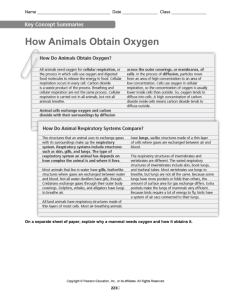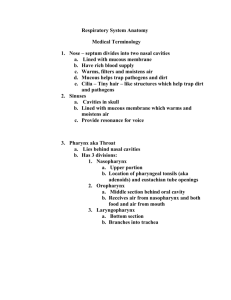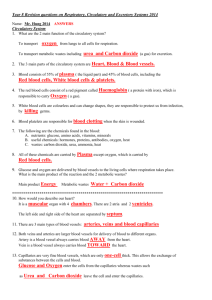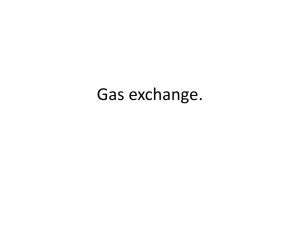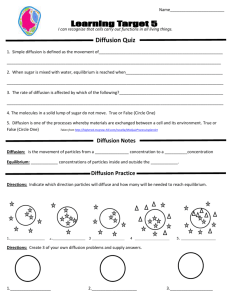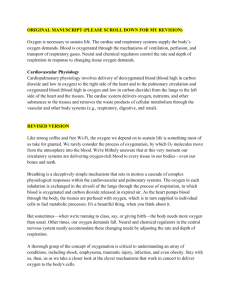Partial Pressure - Broughton Hall High School
advertisement
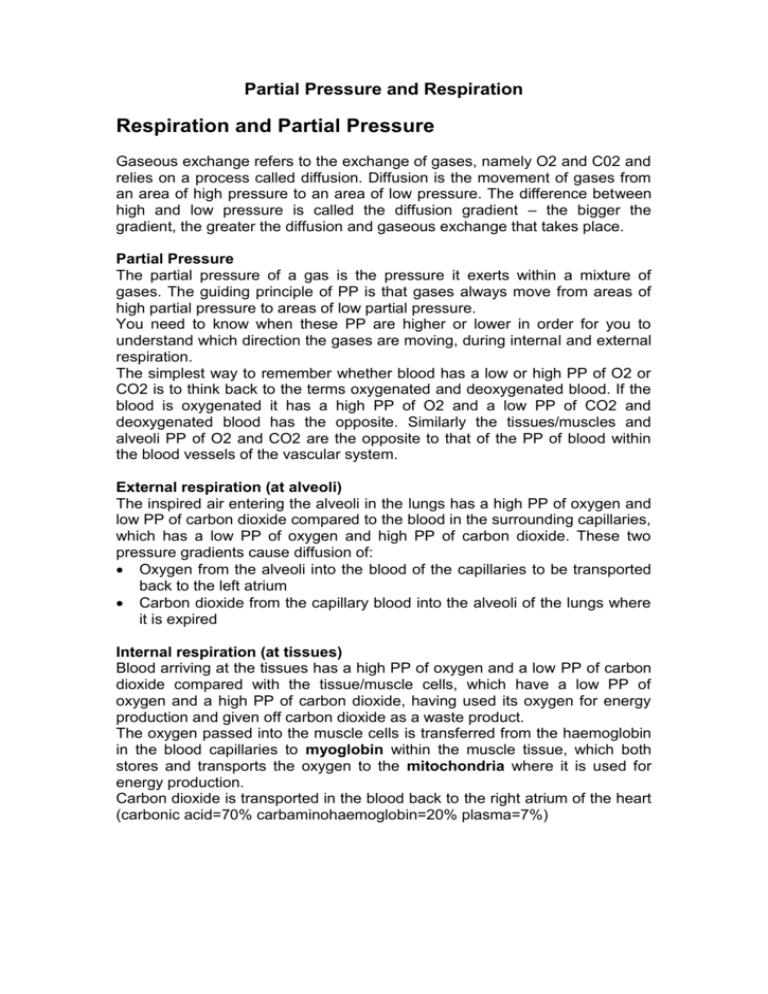
Partial Pressure and Respiration Respiration and Partial Pressure Gaseous exchange refers to the exchange of gases, namely O2 and C02 and relies on a process called diffusion. Diffusion is the movement of gases from an area of high pressure to an area of low pressure. The difference between high and low pressure is called the diffusion gradient – the bigger the gradient, the greater the diffusion and gaseous exchange that takes place. Partial Pressure The partial pressure of a gas is the pressure it exerts within a mixture of gases. The guiding principle of PP is that gases always move from areas of high partial pressure to areas of low partial pressure. You need to know when these PP are higher or lower in order for you to understand which direction the gases are moving, during internal and external respiration. The simplest way to remember whether blood has a low or high PP of O2 or CO2 is to think back to the terms oxygenated and deoxygenated blood. If the blood is oxygenated it has a high PP of O2 and a low PP of CO2 and deoxygenated blood has the opposite. Similarly the tissues/muscles and alveoli PP of O2 and CO2 are the opposite to that of the PP of blood within the blood vessels of the vascular system. External respiration (at alveoli) The inspired air entering the alveoli in the lungs has a high PP of oxygen and low PP of carbon dioxide compared to the blood in the surrounding capillaries, which has a low PP of oxygen and high PP of carbon dioxide. These two pressure gradients cause diffusion of: Oxygen from the alveoli into the blood of the capillaries to be transported back to the left atrium Carbon dioxide from the capillary blood into the alveoli of the lungs where it is expired Internal respiration (at tissues) Blood arriving at the tissues has a high PP of oxygen and a low PP of carbon dioxide compared with the tissue/muscle cells, which have a low PP of oxygen and a high PP of carbon dioxide, having used its oxygen for energy production and given off carbon dioxide as a waste product. The oxygen passed into the muscle cells is transferred from the haemoglobin in the blood capillaries to myoglobin within the muscle tissue, which both stores and transports the oxygen to the mitochondria where it is used for energy production. Carbon dioxide is transported in the blood back to the right atrium of the heart (carbonic acid=70% carbaminohaemoglobin=20% plasma=7%)

